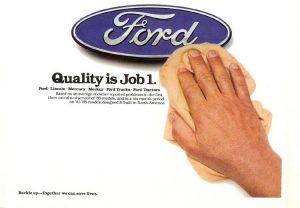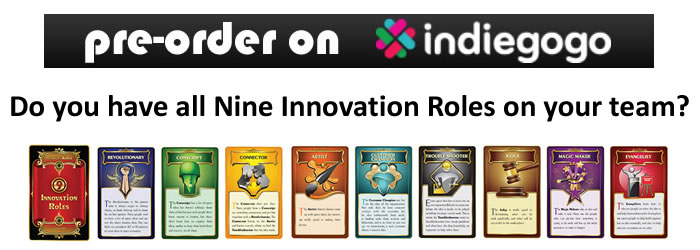 Quality used to mean something to companies.
Quality used to mean something to companies.
A century ago, when people parted with their hard-earned money to buy something, they expected it to last one or more lifetimes.
Durability was a key design criteria.
But, as the stock market became more central to the American psyche and to executive compensation, the quality of available products and services began to decline in the name of profits above all else.
.
 There was a temporary consumer revolt decades ago that resulted in companies pretending that quality was more important than profits, but it didn’t last long. In the end, Americans accepted the decline in quality as outsourcing and globalization led to declining prices (and of course higher profits) and fewer goods carrying the “Made in the USA” label, quickly replaced by Japan, China, Mexico, Vietnam, Bangladesh and the rest.
There was a temporary consumer revolt decades ago that resulted in companies pretending that quality was more important than profits, but it didn’t last long. In the end, Americans accepted the decline in quality as outsourcing and globalization led to declining prices (and of course higher profits) and fewer goods carrying the “Made in the USA” label, quickly replaced by Japan, China, Mexico, Vietnam, Bangladesh and the rest.
 Around the turn of the century we had the birth of the Cradle-to-Cradle (C2C) movement followed a few years later by Al Gore’s An Inconvenient Truth. Perhaps people were beginning to wake up to the fact that our planet’s resources are not infinite and our culture of disposability was catching up to us.
Around the turn of the century we had the birth of the Cradle-to-Cradle (C2C) movement followed a few years later by Al Gore’s An Inconvenient Truth. Perhaps people were beginning to wake up to the fact that our planet’s resources are not infinite and our culture of disposability was catching up to us.
But these movements failed to maintain their momentum and the tidal wave of stores stocking disposable goods continued unabated – dollar stores and party stores spread across the country like a virus. States like New York began shipping their garbage across borders as their landfills reached capacity. Unsold goods began being dumped on the African continent and elsewhere (think about all those t-shirts printed up for the team that didn’t end up winning the Super Bowl).
Is now the time for the winds to shift yet again in favor of quality and sustainability after decades of disposability?
Will more companies better embrace sustainability like Patagonia is attempting to do?
People have been complaining for years about the high cost to repair Apple products and the increasing difficulty of executing these repairs oneself. Recently Apple was FORCED by shareholder activists to allow people to repair their iPhones. Here is their press release that tries to put a positive spin on what they were pressured into doing.
This is the moment for shareholder activists and governments around the world to force companies to design for repairability, reuse and a true accounting of the costs of their products and services inflict upon the populace and the planet. The European Union and Mexico are working together towards this not just because the planet needs this, but because The Circular Economy Creates New Business Opportunities.
Meanwhile, Toyota recently announced that starting this year (2022) in Japan that they will retrofit late-model cars with new technology if the customer desires it. The company aims to let motorists benefit from new technology without having to buy a new car.  Toyota calls this “uppgrading” and defines it as retrofitting safety and convenience functions, like blind spot monitoring, emergency braking assist, rear cross-traffic alert, and the addition of a hands-free tailgate or trunk lid. Remodeling will also be an option and will include replacing worn or damaged parts inside and out, such as the upholstery, the seat cushions, and the steering wheel.
Toyota calls this “uppgrading” and defines it as retrofitting safety and convenience functions, like blind spot monitoring, emergency braking assist, rear cross-traffic alert, and the addition of a hands-free tailgate or trunk lid. Remodeling will also be an option and will include replacing worn or damaged parts inside and out, such as the upholstery, the seat cushions, and the steering wheel.
Are these two companies voluntary and involuntary actions the beginning of a trend – finally?
Or will the culture of disposability continue unabated until our natural resources are exhausted?
Do we truly live in the land of the Lorax?
Image credits: Wikimedia Commons, OldHouseOnline
![]() Sign up here to get Human-Centered Change & Innovation Weekly delivered to your inbox every week.
Sign up here to get Human-Centered Change & Innovation Weekly delivered to your inbox every week.

 GUEST POST from Art Inteligencia
GUEST POST from Art Inteligencia
 The twittersphere erupted with news of GM’s announcement that it was refusing to pay for 2013 Super Bowl advertisements and $10 Million worth of advertising on Facebook.
The twittersphere erupted with news of GM’s announcement that it was refusing to pay for 2013 Super Bowl advertisements and $10 Million worth of advertising on Facebook.

 In writing my article yesterday –
In writing my article yesterday –